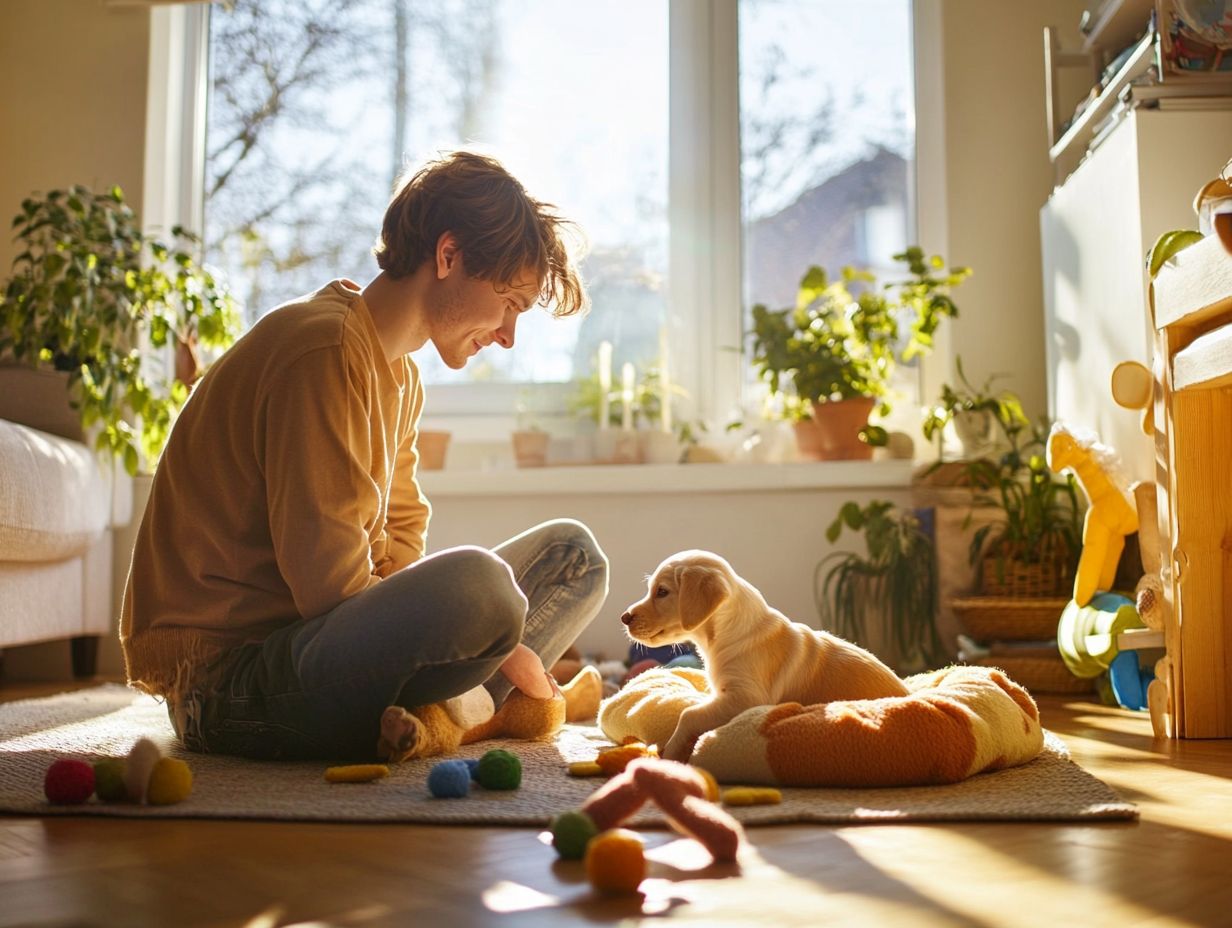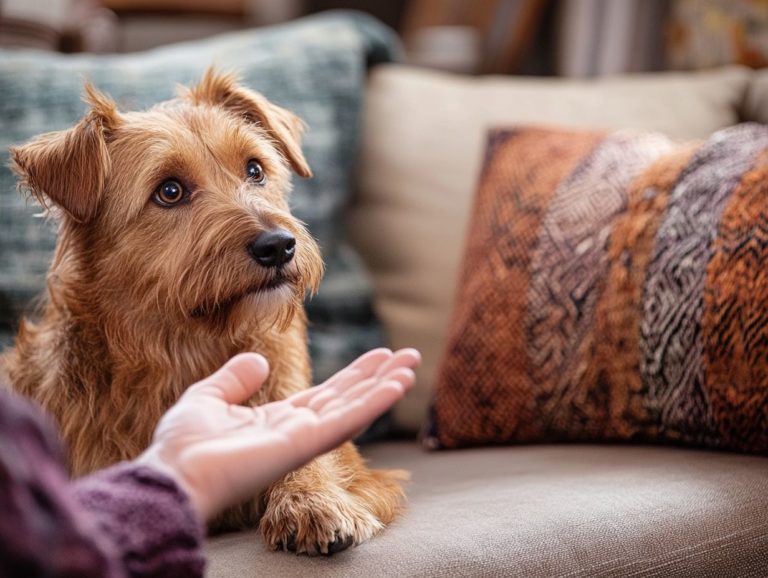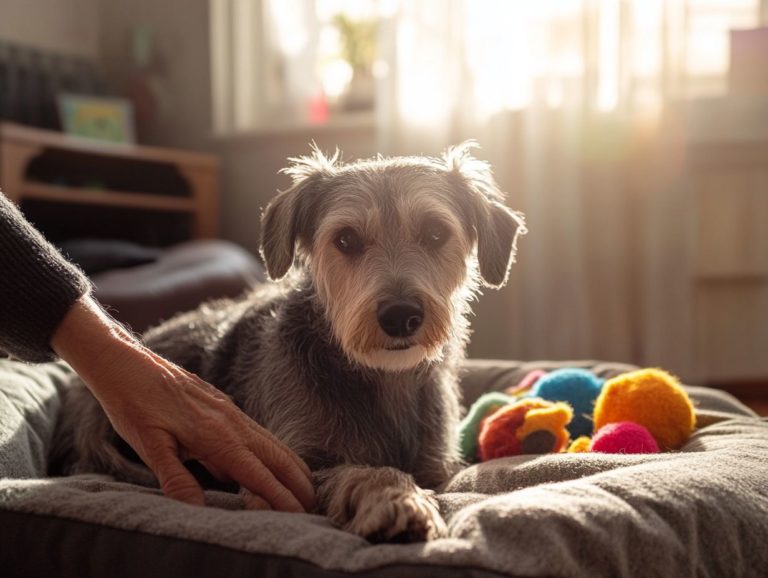What Is the Best Approach for a Newly Adopted Pet?
Bringing a new pet into your home is an exciting adventure. It s full of joy and companionship, but challenges can arise.
As you start this journey, create a safe and welcoming environment. Set clear rules and work on building a strong bond.
Choosing the right food and addressing behavior are essential steps. Each action you take helps your new pet thrive.
Discover the best strategies for a smooth transition. Enjoy a joyful, healthy life together!
Contents
- Key Takeaways:
- Preparing for a Newly Adopted Pet
- Introducing the Pet to Your Home
- Building a Bond with Your New Pet
- Nutrition and Healthcare for Your Adopted Pet
- Addressing Behavioral Issues
- Frequently Asked Questions
- What Is the Best Approach for a Newly Adopted Pet?
- How should I introduce my newly adopted pet to my current pets?
- What should I do if my newly adopted pet seems scared or anxious?
- How can I establish a routine for my newly adopted pet?
- What should I do if my newly adopted pet has behavioral issues?
- How can I make my newly adopted pet feel loved and welcomed?
Key Takeaways:

- Creating a safe and welcoming space helps your new pet feel comfortable.
- Setting rules and routines early on helps your pet adjust and feel confident.
- Training and socializing your pet builds a strong bond and helps with any behavior issues.
Preparing for a Newly Adopted Pet
Preparing for your new pet takes thoughtful planning. You want to ensure they feel comfortable and happy, especially if they are coming from a shelter.
This journey is more than just buying supplies like food and toys. It also involves understanding the adjustment period your pet will go through.
Building trust and affection is important. This strong relationship is key for long-term success with your furry friend.
Creating a Safe and Welcoming Environment
A safe and welcoming space is vital for your new dog s comfort, especially during their adjustment period. Make sure your home is free from hazards and filled with comforting items like blankets and toys.
Dog-proofing your home can reduce dangers from hidden cords and toxic plants. Learn to read your dog s body language; for example, flattened ears or a tucked tail can indicate anxiety.
Consistent routines create stability. Clear rules help your dog understand their place in your home, fostering a sense of belonging.
Introducing the Pet to Your Home
Introducing your new pet to your home is a moment that sets the tone for their comfort. To ensure a smoother experience, consider following the guidelines on the best way to introduce a new pet and pay close attention to their feelings during this transition.
Set clear expectations to reduce anxiety. This opens the door for a loving bond to develop.
Establishing Boundaries and Routines

Setting rules and routines is crucial for a stable environment. This structure helps your pet understand their place at home.
Be consistent with commands and expectations. This approach not only aids your dog s adjustment but also strengthens your bond.
A daily routine with scheduled feeding, walks, and playtime brings predictability. This is essential for a new dog in an unfamiliar place.
Keeping training methods consistent builds trust. This enhances your relationship, leading to a well-adjusted, confident canine companion.
Building a Bond with Your New Pet
Building a bond with your new pet is key to a lasting friendship. It fosters mutual trust and understanding as you both navigate the joys and challenges of pet ownership.
Invest your time, attention, and affection through play and shared experiences. This significantly enhances your dog s sense of safety and comfort.
This nurturing approach paves the way for a deeper, more meaningful connection that enriches both your lives. You’ll learn to read each other’s emotions and reactions.
Effective Training and Socialization Techniques
Effective training and socialization techniques are essential for helping your new pet develop good behavior and become well-adjusted in various environments. Use training that rewards good behavior with treats or praise to instill essential commands and encourage desirable behaviors.
Expose your dog to various experiences different sounds, sights, and interactions with other animals and people. Whether it’s a bustling park or a quiet street, varied environments help build confidence and reduce anxiety and fear.
Consistent socialization sessions teach your dog proper behavioral responses, equipping them to handle diverse situations with calmness.
Incorporate structured playdates with well-behaved dogs to enhance this process. This fosters healthy relationships and teaches appropriate canine communication skills.
Nutrition and Healthcare for Your Adopted Pet
Nutrition and healthcare are vital to helping your new pet thrive! They provide the vital nourishment and medical care necessary for them to flourish. Choose high-quality food and treats now to ensure a healthy start for your pet.
Regular veterinary check-ups can help prevent potential health issues while promoting overall well-being. Your attentive care lays the foundation for a happy, healthy life together.
Choosing the Right Food and Veterinary Care

Choosing the right food and veterinary care is vital for your pet s health. It influences their energy levels, behavior, and overall well-being. Consult with your vet about the best dietary options tailored to your dog s specific needs.
Different breeds have distinct nutritional requirements based on size, age, and activity level. Explore options like grain-free diets, high-protein formulas, or even raw feeding if that suits your pet.
Regular vet visits keep vaccinations up to date and provide an opportunity for comprehensive health checks. This allows you to catch potential issues early.
Your feeding habits play a significant role in your pet’s emotional comfort. A well-nourished dog tends to be more relaxed and less prone to anxiety. Invest in quality food and veterinary care to shape a happier, healthier companion.
Addressing Behavioral Issues
Addressing behavioral issues, such as excessive barking or chewing, is an unavoidable aspect of pet ownership. Grasping the underlying challenges can greatly enhance your dog’s responses to different situations.
Engage in effective communication and recognize training opportunities. This proactive approach will ultimately foster a more harmonious relationship with your canine companion.
Common Challenges and How to Handle Them
New dogs may face challenges such as excessive barking, chewing, or anxiety. It’s important to address these issues quickly with effective strategies.
Recognize signs of distress or boredom. For example, barking often means your dog needs attention or stimulation.
Use positive reinforcement, like treats or praise, to improve behavior. Engaging toys and regular exercise can reduce anxiety and destructiveness.
Establish a structured routine. This creates security and helps your dog thrive.
Monitor your dog’s reactions during training sessions for effective strategy adjustments. Make sure your dog feels supported in their new home.
Frequently Asked Questions
What Is the Best Approach for a Newly Adopted Pet?

Create a safe space for your newly adopted pet. A designated area, like a crate or bed, helps them feel comfortable.
How should I introduce my newly adopted pet to my current pets?
Introduce your new pet slowly to existing pets. Start with separate rooms, then allow short, supervised sessions to get used to each other’s scents.
What should I do if my newly adopted pet seems scared or anxious?
Give your pet space during their adjustment. Avoid overwhelming them and let them approach you when ready.
How can I establish a routine for my newly adopted pet?
Set a regular schedule for feeding, walking, and playtime. This structure helps your pet feel secure.
What should I do if my newly adopted pet has behavioral issues?
Consult a professional trainer for behavioral problems. They can help identify the cause and provide effective training.
How can I make my newly adopted pet feel loved and welcomed?
Spend quality time with your pet. Show affection and provide the necessary supplies to help them feel secure and happy.






